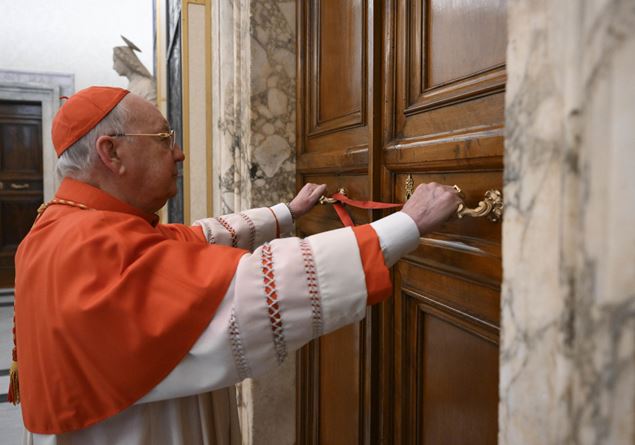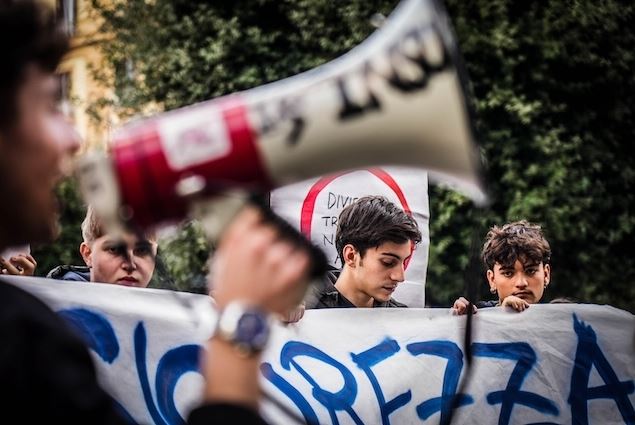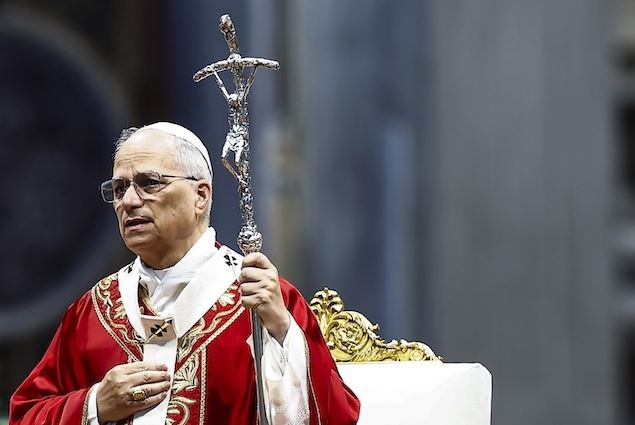The seal to the papal apartment, the piscatorial ring, the bell of San Pietro, the flags at half auction in the Vatican state. There are several signs that announce the death of Pope Francis and the beginning of the vacant office.
The first is the official website of the Holy See where, from today, there is no longer the figure of the pontiff and its activity (documents, apostolic trips, celebrations) but the logo of the Holy See with the petrine keys and the wording in Latin, the official language, which reads “Apostolica Vacans”.
The symbols of the vacant venue follow several rituals, some older, others changed over time.
The seals
Based on the provisions of the Apostolic Constitution Dominici Gregis universesthe seals are affixed both to the papal apartment of the Santa Marta house, and to that of the Apostolic Palace, used in these years by Pope Francis for the recitation of the Angelus and the hearings. “The Camerlengo”, reads Article 17, “must affix the seals to the study and the room of the same pontiff, providing that the staff usually residing in the private apartment can remain there until after the burial of the Pope, when the entire papal apartment is sealed; communicate his death to the Cardinal Vicar for Urbe, who will give news to the Roman people with special notification; and likewise to the Archpriest Cardinal of the Vatican Basilica; Take possession of the Vatican Apostolic Palace and, personally or by means of one of its delegates, the Palaces of Lateran and Castel Gandolfo, and exercise its custody and government “.
The hammer and the piscatorial ring
From the ritual it disappeared, for example, The hammer with which Cardinal Camerlengo hit the Pope’s forehead three times, calling him with his name of baptism, to ascertain his death. The purple, after receiving the confirmation of the doctors, now limits itself to spreading a veil on the face of the pontiff. Always the chamberlain then takes over the ring of the fisherman, whom the Pope had received in the pontificate start mass and which constitutes his seal. In the past the ring was broken, over time the custom had changed: theOrdo Exsequiarum Romani Pontificisis reformed by Francesco, it has definitively established that it is up to the Cardinal College, in one of the first general congregations preliminary to the conclave, to cancel the ring.
John Paul II had ordered that he was not destroyed and symbolically donated it to St. Joseph and was then placed by the archbishop of Krakow, Franciszek Macharskiin the church of the Scalzi Carmelite in Wadowice, hometown of the Pontiff. He donated it to life on October 16, 2003, for the 25th anniversary of Pontificate. The ring of the fisherman or piss (Latin, Anulus Piscatoris) is one of the pope’s signs, which he receives during the solemn mass of the beginning of his pontificate and wears the ring finger of the right hand. The rite of the delivery of the piscatorial ring was reinserted in the agreement that John Paul II promulgated in 2000.
The bell of San Pietro
Immediately after the official announcement of the pontiff’s death, the large bell of the Basilica of San Pietro begins to play, alone, in a hammer. It is the signal that starts the runs throughout Rome (the diocese of the Pope) and then in the churches of the world.
The Valadier – from the name of the founder who made him in 1786 – is located under the left watch, looking at the facade of the Vatican Basilica. It is surrounded by five other bells, but on this occasion the rinses are entrusted only to what the Romans call “Campanone”. Instead, they will return to play all together, in Spiesa, when the white smoke will be released from the chimney of the Sistine Chapel: at that moment the vacant venue will be over and the new pope is ready to greet the crowd.
Flags and access to the Apostolic Palace
After the hammer runs, there are two signs that express the mourning of the papal state until the day of the funeral. On all the buildings of the Holy See, the white and yellow flags with the coat of arms of the Petrine keys are placed at half auction. An indication that also concerns extraterritorial structures in the different areas of the city of Rome and the nunciatures that constitute the Vatican diplomatic network in the world.
Only in the Vatican, on the other hand, will there be an entrance door closed in half and will be that of the bronze door at the bottom of the right colonnade of St. Peter’s Square. As a rule, it is one of the most photographed views of tourists and pilgrims, with the Swiss sentinel guards on one side. From that passage you access the Michelagiolesco staircase that leads to the Apostolic Palace: on the third floor, until the advent of Francesco, there was the apartment where the popes lived.
ùdopo Bergoglio’s decision to move to Casa Santa Marta remained the representative hall and the offices of the Curia, including the Secretariat of State. But formally the seventeenth -century bronze doors made by Giovanni Battista Soria and Orazio Censori remained access to the pontifical residence and the custom of closing one as a sign of mourning has not been amended.










